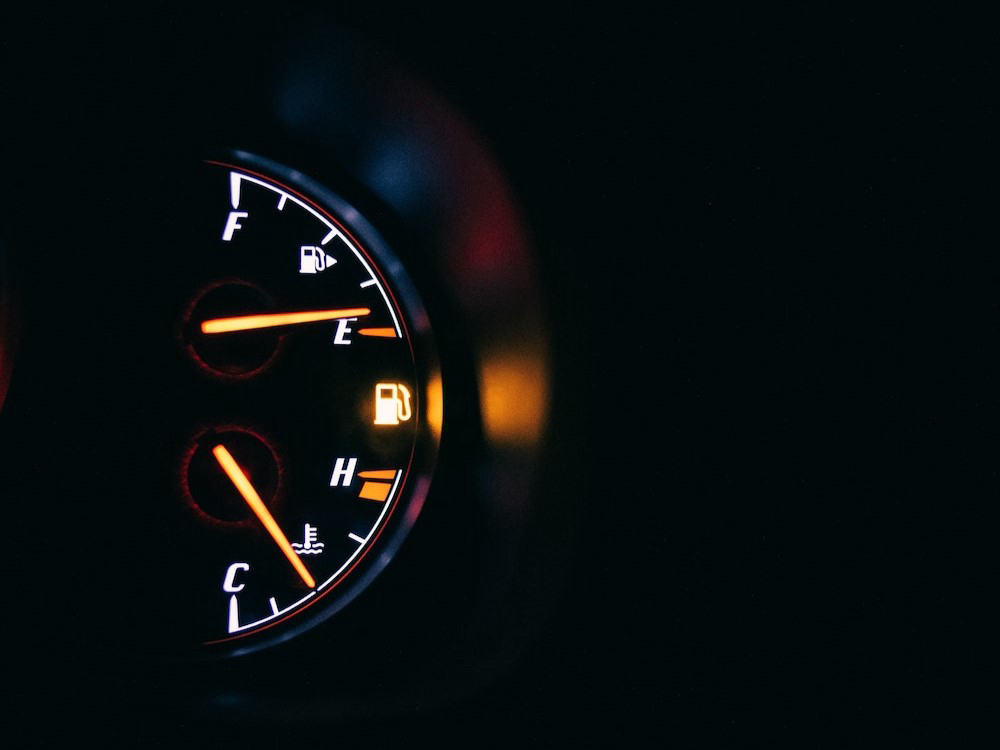- What Causes a P0171 Code in a Toyota
- Diagnose and Repair a P0171 Code
- Common Symptoms of a P0171 Code
- How to Prevent Future Occurrences
- What Are the Most Common Causes
- Is It Safe to Drive With the P0171 Code
- What Are Some Tips for Troubleshooting
- Should I Replace or Repair Parts
- Issue With The Oxygen Sensor
- What Are Some Cost-Effective Solutions
What Causes a P0171 Code in a Toyota?
A P0171 code in a Toyota is an indication of a lean air/fuel mixture. This means that the engine is receiving too much air and not enough fuel, resulting in an imbalance. The most common cause of this code is a vacuum leak, which can be caused by a faulty or disconnected hose, cracked intake manifold gasket, or damaged PCV valve.
Other possible causes include clogged fuel injectors, faulty oxygen sensors, and incorrect spark plug gap settings. In some cases, the issue may be related to the mass airflow sensor (MAF) or throttle body being dirty or malfunctioning.
It is important to diagnose and repair any issues causing this code as soon as possible to ensure optimal engine performance and prevent further damage from occurring. You might also notice other similar OBD codes, such as the P0174 code that you might notice in a Chevy. Alternatively, there’s the P2096 diagnostics error code.
How to Diagnose and Repair a P0171 Code in a Toyota?
Diagnosing and repairing a P0171 code in a Toyota can be a difficult task. However, with the right knowledge and tools, it is possible to diagnose and repair this issue.
- The first step in diagnosing and repairing a P0171 code is to check for any vacuum leaks. Vacuum leaks can cause the engine to run lean, which will trigger the P0171 code. To check for vacuum leaks, start by inspecting all of the hoses connected to the intake manifold for any cracks or holes. If any are found, replace them immediately.
- Next, inspect all of the air filters on your vehicle for dirt or debris buildup that could be restricting airflow into your engine. If there is an excessive amount of dirt or debris present, replace your air filter as soon as possible.
- Once you have checked for vacuum leaks and inspected your air filters, it’s time to move on to checking fuel system components such as fuel injectors and fuel pressure regulators. Make sure that all of these components are functioning properly before moving on to other potential causes of the P0171 code such as spark plugs or oxygen sensors that may need replacing due to wear or damage over time.
- Finally, if none of these steps have resolved your issue with the P0171 code in your Toyota vehicle then you may need professional help from an experienced mechanic who can further diagnose and repair this issue more accurately using specialized diagnostic equipment such as an OBD-II scanner tool which will provide more detailed information about what exactly is causing this problem for it to be fixed correctly once and for all.
Common Symptoms of a P0171 Code in a Toyota?
A P0171 code in a Toyota is an indication of a lean air/fuel mixture. This means that the engine is receiving too much air and not enough fuel. Common symptoms associated with this code or if your engine is running lean can include:
1. Poor engine performance, such as reduced power and acceleration.
2. Reduced fuel economy due to the engine running inefficiently.
3. Illuminated check engine light on the dashboard, indicating a fault in the system has been detected by the vehicle’s computer system (ECU).
4. Rough idle or stalling when coming to a stop or slowing down for turns or traffic lights.
5. Excessive exhaust smoke, which may be white or gray due to unburned fuel being expelled from the tailpipe of your vehicle
How to Prevent Future Occurrences of the P0171 Code in Your Toyota?
If your Toyota has been displaying the P0171 code, there are several steps you can take to prevent future occurrences.
- First, check the air filter and replace it if necessary. A clogged or dirty air filter can restrict airflow and cause a lean condition in the engine.
- Second, inspect all vacuum hoses for cracks or leaks. Vacuum leaks can also cause a lean condition in the engine and should be repaired as soon as possible.
- Third, check for any exhaust system restrictions such as clogged catalytic converters or mufflers that could be causing an issue with backpressure in the exhaust system. If any of these components are found to be faulty they should be replaced immediately.
- Fourth, inspect all fuel injectors for proper operation and cleanliness. Dirty fuel injectors can cause a misfire which will result in a lean condition in the engine and should be cleaned or replaced if necessary. If you do find any dirty fuel injectors, you could try to clean them with the best fuel injector cleaner.
- Finally, have your vehicle’s oxygen sensors checked by a professional mechanic to ensure they are functioning properly and provide accurate readings to your vehicle’s computer system so it can adjust fuel delivery accordingly. If any of these sensors are found to be faulty they should also be replaced immediately as this could lead to further issues with your vehicle’s performance down the road if left unchecked.
What Are the Most Common Causes of the P0171 Code on Toyotas?
The most common cause of the P0171 code on Toyotas is a vacuum leak. This can be caused by a faulty or worn-out intake manifold gasket, an air leak in the intake system, or a cracked or damaged vacuum hose.
Other possible causes include an incorrect fuel pressure regulator setting, a faulty mass airflow sensor (MAF), and an exhaust gas recirculation (EGR) valve that is stuck open. In some cases, the code may also be triggered by low fuel pressure due to clogged fuel injectors or a weak fuel pump.
Is It Safe to Drive With the P0171 Code on My Toyota?
It is not recommended to drive with the P0171 code on your Toyota. This code indicates that there is an issue with the air-fuel mixture in your vehicle, which can cause a decrease in engine performance and fuel economy.
Additionally, it can lead to further damage if left unchecked. It is best to have a qualified mechanic inspect and diagnose the issue as soon as possible so that any necessary repairs or adjustments can be made.
What Are Some Tips for Troubleshooting and Fixing the P0171 Code on My Toyota?
1. Check the air filter and replace it if necessary. A clogged or dirty air filter can cause the P0171 code to appear.
2. Inspect all vacuum hoses for cracks, leaks, or other damage and replace any that are damaged.
3. Check the fuel pressure regulator for proper operation and replace it if necessary.
4. Inspect the mass airflow sensor (MAF) for dirt or debris buildup and clean it as needed with a specialized cleaner designed specifically for MAF sensors.
5. Check all oxygen sensors for proper operation and replace any that are not functioning correctly or have failed.
6. Inspect all spark plugs and spark plug wires for wear, corrosion, or other damage and replace them as needed to ensure proper engine performance and fuel economy levels are maintained at optimal levels.
7. Have a professional technician perform a smoke test on your vehicle’s intake system to check for any vacuum leaks that may be causing the P0171 code to appear on your Toyota’s diagnostic system.
Should I Replace or Repair Parts When Dealing With the P0171 Error on My Toyota?
When dealing with the P0171 error on a Toyota, it is important to consider whether to replace or repair parts. The P0171 code indicates that there is an issue with the air-fuel mixture in the engine, which can be caused by a variety of issues.
In some cases, replacing certain parts may be necessary to resolve the issue. However, if the problem is minor and can be fixed through repairs or adjustments, then this may be a more cost-effective solution.
To determine whether replacement or repair is necessary for resolving the P0171 error on your Toyota, it is important to have your vehicle inspected by a qualified mechanic who can diagnose and identify any underlying issues. They will then be able to advise you on what steps need to be taken to fix the problem and get your car running smoothly again.
How Can I Tell If My Vehicle Has an Issue With Its Oxygen Sensor?
If you have recently fixed the P0171 error on your Toyota, it is important to ensure that any underlying issues with the oxygen sensor have also been resolved. To determine if this is the case, you should first check for any diagnostic trouble codes (DTCs) related to the oxygen sensor.
If there are any DTCs present, they can be read using an OBD-II scanner and should be addressed before continuing. Additionally, you should inspect the wiring and connectors of the oxygen sensor for signs of damage or corrosion. If either of these are present, they must be repaired or replaced before further testing can take place.
Finally, a visual inspection of the exhaust system should be conducted to ensure that there are no blockages or leaks which could affect its performance. Once all these steps have been completed and any necessary repairs made, a road test can then be performed to assess how well your vehicle is running with its new oxygen sensor in place.
What Are Some Cost-Effective Solutions for Resolving This Issue?
The P171 error code on a Toyota vehicle is typically caused by an issue with the fuel system. Fortunately, several cost-effective solutions can be used to resolve this problem.
- One of the most common solutions is to replace the fuel filter. This should be done every 30,000 miles or so to ensure that it is not clogged and causing the P171 error code. Additionally, it may be necessary to clean or replace any other components of the fuel system such as the fuel injectors or pressure regulator.
- Another potential solution is to check for any vacuum leaks in the intake manifold and repair them if necessary. Vacuum leaks can cause a variety of issues including poor engine performance and increased emissions, which can lead to an erroneous P171 error code being displayed on a Toyota vehicle’s dashboard.
- Finally, it may also be necessary to check for any faulty wiring connections in the engine bay and repair them if needed. Faulty wiring connections can cause various electrical issues which could result in an incorrect reading from one of the sensors connected to your vehicle’s computer system, leading to a false P171 error code being displayed on your dashboard.


